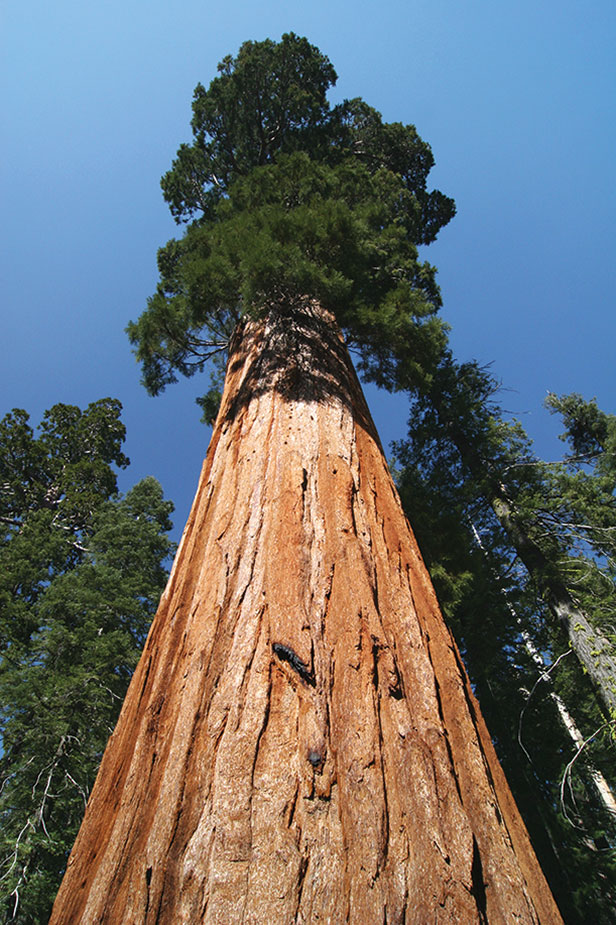
Knowing how tall trees can grow in any given region can help ecologists determine the potential density of a forest, the size of its tree canopy, the amount of carbon it stores, and the health of the overall ecosystem.
Now a team led by an MIT researcher has built a simple model to predict the maximum tree height in different environments across the United States. The model, published in PLoS One, uses basic meteorological data—such as average annual temperature, precipitation, humidity, and sunlight—to compute how tall a tree is likely to grow under those conditions.
Lead author Chris Kempes, a PhD student in the Department of Earth, Atmospheric, and Planetary Sciences, describes a tree as a vascular “highway system” that pumps water and nutrients from the soil to the leaves, which in turn release sugary by-products of photosynthesis that are transported down to the roots. The pumping capacity, or fluid flow rate, is a bit of a balancing act: the rate of metabolism depends in part on environmental factors.
The team drew up an “idealized tree”—an average model of all tree species in the United States—and developed equations to represent the relationships between fluid flow rate, tree size, and meteorological factors such as average temperature and sunlight.
Then they put the model to work, predicting the height of the tallest trees across the country using local meteorological data. The predictions from the model closely matched actual measurements taken by the U.S. Forest Service, with two exceptions: the arid Southwest and parts of New England that have been heavily logged.
The group used the same model to predict what would happen given global temperature changes. With an increase of 2 °C across the country, the average height of the tallest trees would shrink by 11 percent. Conversely, a dip of 2 °C would spur trees to sprout up by 13 percent.
With the help of the model, Kempes plans to use data on maximum tree height to estimate the whole distribution of tree heights and the variety of species that a given environment can support.
“If you take a really small juniper tree that lives in the desert and you put it in the Northwest, it’ll grow to perhaps four times as tall,” Kempes says. “But it won’t grow to be the height of a redwood. And this is what all of ecology is interested in: How much of your existence is determined by the environment versus your genetics? Now we can concretely say this is the environmental side of things, and now we want to go after the species.”
Keep Reading
Most Popular
Large language models can do jaw-dropping things. But nobody knows exactly why.
And that's a problem. Figuring it out is one of the biggest scientific puzzles of our time and a crucial step towards controlling more powerful future models.
The problem with plug-in hybrids? Their drivers.
Plug-in hybrids are often sold as a transition to EVs, but new data from Europe shows we’re still underestimating the emissions they produce.
How scientists traced a mysterious covid case back to six toilets
When wastewater surveillance turns into a hunt for a single infected individual, the ethics get tricky.
Google DeepMind’s new generative model makes Super Mario–like games from scratch
Genie learns how to control games by watching hours and hours of video. It could help train next-gen robots too.
Stay connected
Get the latest updates from
MIT Technology Review
Discover special offers, top stories, upcoming events, and more.